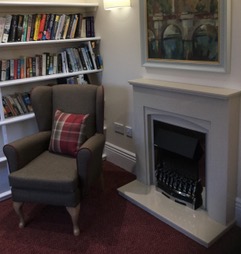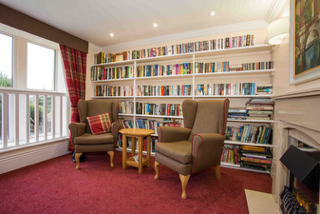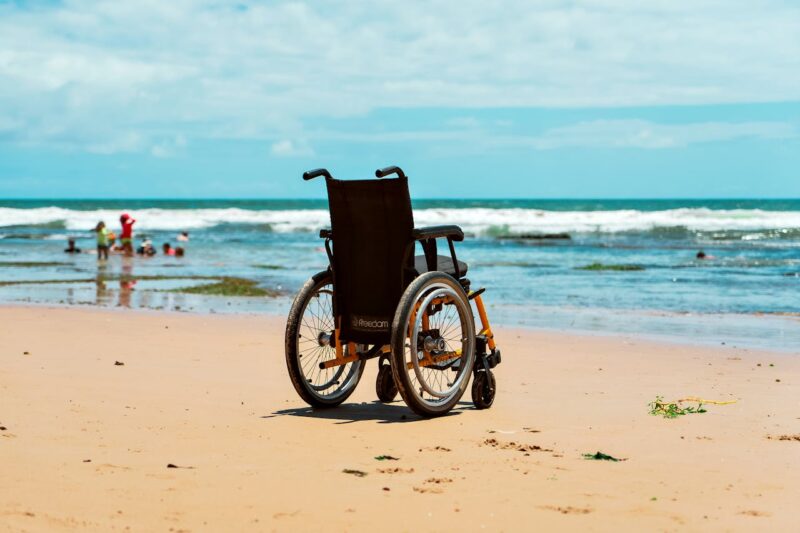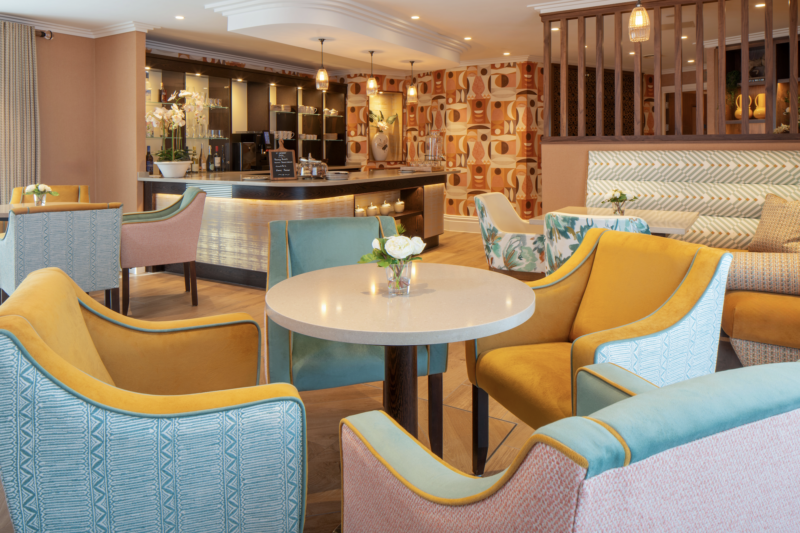Interior designers play a vital role in improving the lives of people with dementia by creating environments that are comfortable, familiar, and easy to navigate. Thoughtful design can help reduce confusion and anxiety, fostering independence and well-being. This presentation outlines our Dementia design checklist, offering insights into how and when to make the best decisions.

- Colour Contrast:
Colour contrast is the most vital design element for dementia-friendly environments. High contrast between surfaces helps residents differentiate between objects and spaces, improving spatial awareness.
- Best Practice: A Light Reflective Value (LRV) of at least 30% between adjacent surfaces is recommended to ensure clear differentiation.
- Applications:
- Use contrasting colours on door frames, floors, walls, and furniture to make spaces easier to navigate.
- Adding contrasting piping on chairs and cushions helps with spatial orientation.
- Patterns: Keep It Simple
Busy patterns can cause confusion and stress for residents with dementia. Simpler patterns promote calm and reduce anxiety.
- Best Practice: Stick to plain or semi-plain fabrics, Nature-inspired elements such as soft greens in bedrooms create a calming haven.
- Applications:
- Throws and cushions help add comfort without overwhelming visual stimuli.
- Fabric companies such as Panaz produce furnishing fabrics with antimicrobial finishes and durable Fire retardancy that can withstand high-temperature washing. Panaz also attribute an LRV rating on every fabric.
- Lighting:
As vision deteriorates with age, the need for enhanced lighting becomes essential. Poor lighting can create shadows or dark areas, increasing confusion and the risk of falls.
- Best Practice: Older individuals need 2-3 times more light than younger adults. Ensure that corridors and activity spaces have good uniform lighting to eliminate dark spots and shadows.
- Applications:
- Use ambient lighting in bedrooms and bathrooms to create a soothing atmosphere.
- Bright lighting in communal areas and corridors.
- Furniture:
Furniture in dementia care homes needs to prioritize both safety and ease of use,
- Best Practice: All our care home furniture has smooth, rounded edges to minimize the chance of injury. Our dementia ranges include open hanging spaces in wardrobes and contrasting colours for drawer and door fronts to enhance visibility.
- Applications:
- Choose comfortable seating that supports posture, Vapour permeable, waterproof interliners on the seat cushions and memory foam seat pads for comfort.
- Profile beds can have padded headboards to complement the décor, making them less clinical.
- Choose dementia friendly bedroom furniture with open hanging spaces.
- Signage and Wayfinding:
Wandering is a common behaviour in dementia care homes, and it should be supported rather than suppressed. Proper signage and wayfinding can help residents explore safely.
- Best Practice: Create focal points at the end of corridors to stimulate curiosity and conversation. Incorporating books, seating areas, or baskets with small items can engage residents and encourage interaction.
- Applications:
- Use clear, easy-to-read signage to help residents find their way and feel more independent.
- Wall decorations, murals of local streets, or sports/ movie star memorabilia help residents feel more connected to their environment.
Interior designers have the power to transform care homes into spaces where residents can feel safe and comfortable. Thoughtful design, which considers all the above elements can make a significant difference in how residents perceive and interact with their surroundings.
Our mission at Care Home Furnishings, is to create homely environments that promote confidence, independence, and a sense of achievement for every resident. In doing so, we empower residents to lead fulfilling lives, making care homes places where they can thrive.




